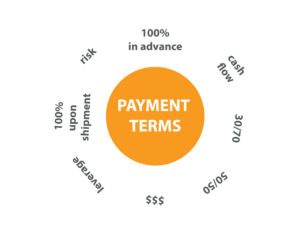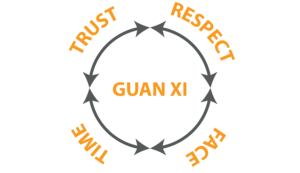Blog: How Professionals Negotiate Supplier Payment Terms to Increase Cash Flow, Reduce Risk & Gain Leverage
How Professionals Negotiate Supplier Payment Terms to Increase Cash Flow, Reduce Risk & Gain Leverage
One of the common challenges that many people ask about is in regards to finding and negotiating with suppliers. Private label Amazon sellers rely on finding a trustworthy suppliers, as the foundation of a successful business relies on quality products that can be sourced consistently and cost-effectively.
We recently had Gary Huang of 80/20 Sourcing on a webinar to discuss how to find and evaluate suppliers (you can read the recap and watch the video here). As you can tell from the content, Gary is an expert in working with suppliers in China.
There were still questions remaining about how to negotiate with suppliers to set yourself up for long term success: increasing cash flow, reducing risk, and maintaining leverage in your supplier relationship. Gary will cover this topic in detail in this guest post below:
What do you think of first when negotiating with suppliers? Do dollars sign s come into your head? Is the price right? But did you know there is another factor which can make or break your business and it is often
s come into your head? Is the price right? But did you know there is another factor which can make or break your business and it is often
overlooked? In fact by negotiating this properly you will have more money to pay expenses, pay yourself, or invest back into your business, cut your risk of losing that money, and gain leverage if any problems arise.
Supplier Payment Terms: An Overview
In summary, by negotiating the right payment terms you can score these wins:
- Maximize your cash flow
- Minimize the risk of losing your money
- Gain leverage against the supplier if you encounter quality problems
What are Payment Terms?
Payment terms are the designated amounts of money you pay the supplier at various points in time.
This process begins from when a purchase order is placed, through production, to delivery. In other words, this is how much of the order value you will pay at various points of time throughout the production process.
Long story short, the less you pay upfront, the more cash you will have on hand, the less cash you are risking, and the more leverage you have in case there’s any problems with the order.
For example, for sample orders it’s common to pay 100% upfront because not only is the value so little , this also quickly gets the supplier started with production and delivery.
On the other hand, you should be more careful with trial orders since several thousands of dollars can be at stake. Moreover, when working with a new supplier I suggest to always err on the side of caution. For initial orders, I normally negotiate payment terms of 30% or 50% advance payment and the balance due after inspection before shipment.
You might be thinking – Why do I need to pay anything at all at the start of production? Well if you are not a large well-known buyer (e.g. Walmart, Target) then in order to get the suppliers interested in doing business with you, they are inclined to reduce their risk by collecting an advance payment when you place the order. This payment will help offset their costs to purchase raw materials and the logistics of moving them to the factory as well as to pay their workers' salaries as production begins. After the order is completed, the balance is then paid ideally after an inspection assuming the buyer is satisfied with the product quality.
Why negotiate payment terms?
First off, it’s in your best interest to negotiate payment terms to defer partial payment later so you can increase your cash flow. This means you have more working capital to pay expenses, your salary, or invest it back into your business. For example by negotiating payment terms of 30/70 and deferring 70% of the balance until after production, you have another 30-45 days to make that money work for you.
Secondly, as a buyer, the more capital you have tied up early in the production cycle, the more risk you are taking in case anything goes wrong.
Common rookie mistake: When dealing with large orders, if you pay 100% advance you are taking on a lot of risk. For example if the supplier suddenly closes shop and stops responding, there’s not much you can do to get your money back. Also, if there are any problems with the product discovered later and you have already paid them 100% you don’t have much leverage to get them to fix the problem.
Conversely, if you’ve negotiated payment terms so that you are withholding payment until the product passes an inspection, then you have LEVERAGE to ask the supplier to fix these problems. In other words, the buyer can say: “fix these problems or else you’re not gonna get paid!”
When can I negotiate Payment Terms?
Similar to pricing, payment terms can be negotiated throughout the life of the business relationship.
The pre-order negotiations phase is the first opportunity to stake your position in the battle of payment terms. Keep in mind however, just as you are evaluating the supplier, they are also evaluating you as the buyer! If you’re an Amazon private labeler, you are an unknown to them as they are an unknown to you. In other words, they are taking a risk on you so naturally they want to try get as much as they can from you upfront to reduce their risks.
Over time as both parties get to know each other better, as a stronger relationship forms, as trust increases, and guanxi is built, then payment terms can evolve.

- Guanxi – Building relationships to build business
Here is an example of a common payment terms scenario starting from the initial phase of ordering samples, to placing a trial order, to a repeat order, to building guanxi with the supplier to get more favorable payment terms.
- Sample order: 1pc at $75. 100% payment in advance.
- Trial order of 500pcs $2,500. 50% advance payment and 50% paid after inspection before shipment.
- Volume orders: 1,000pcs at $4,500: 30% advance payment and 70% paid after inspection before shipment. Note price was negotiated down as well.
- Over time as “Guan Xi” grows orders of 3,000 to 5,000pcs placed every 60-90 days: 100% due upon copy of B/L. This means that the buyer did not pay for the order until AFTER it was shipped.
- A review of common payment term scenarios

The key takeaway here is that you will negotiate better payment terms over time as trust builds, volumes grow, and guanxi is obtained. If you tried to come in from day one and negotiate 100% payment upon copy of B/L the supplier probably won’t respond to you unless you’re email address says “@walmart.com.”
Speaking of which, the big box retailers are able to negotiate payment terms of net 60 and beyond because of the gigantic order volumes they can award the factory. So you probably won't get the luxury of paying for a shipment up to 60 days (or more) after shipment because you're not ordering tens of millions of dollars of product!
Case study 1:
Remember, besides for a sample order, never pay for 100% upfront unless you’re willing to lose that money. One example is student of mine who before she came to me paid 100% upfront for a trial order. She placed the order blind without ordering any samples. When she asked me for advice, I asked have you seen the actual product yet? She replied that she only saw pictures on Alibaba and over email.
BEWARE: Often times in China “What you see is NOT what you get”. The pictures on Alibaba often times are often taken and copied from other sites or photoshopped to high-heaven. So I never trust the pictures from suppliers alone.
I recommended that she have the supplier send her samples of the products before production began to validate the sample quality. So she did and when the samples arrived she was in for a big surprise. It turned out that the products were NOTHING like what she was promised. The edges were cut crudely and unfinished. There was damage to the surface of the product. And the product was so flimsy that it couldn’t even do the job it claimed. Fortunately she conducted the transaction through Alibaba Secure Payment (Escrow) and is now in the process of getting her money back.
But imagine if she went ahead with the order. She would have lost thousands of dollars with an order full of junk not to mention the headaches of trying to fix it.
Case study 2:
A client of mine ordered a lot of fashion accessories from a supplier and they agreed on payment terms of 30% advance and 70% due after inspection. After placing the purchase order and monitoring production he noticed that there was a color discrepancy in the fabric. Because he hadn’t paid the 70% balance he had more leverage to get the supplier to agree to fix the problem.
If on the other hand he paid 100% upfront, there’s no telling if the supplier would turn around and say: “Sorry mei ban fa”. This is one of the most common expressions in Chinese. Translation: “there’s nothing we can do”.
Lesson learned: For trial orders and above, if you pay 100% upfront not only have you tied up your cash too early, you're increasing the risk of losing your cash and in case of any problems you have no leverage against the supplier to fix them.
How much you can negotiate for always comes down to your relationship or “guanxi” with the supplier. If the boss believes in you and sees you as a Grade A buyer, then you can get preferential treatment translated into better pricing, more favorable payment terms, more attention to your order, and prioritized deliveries.
Rule of thumb: If you’re new then don’t expect too much coming out the gate. 50/50 is fair starting… Click To Tweet
By properly negotiating payment terms you can free up more cash, reduce your risks, and increase your leverage with your suppliers as your business grows. The pros know how to do this so I’d like to give you a free Payment Terms worksheet with common payment term scenarios so you can negotiate with confidence. Simply signup for my free newsletter to get it now.
